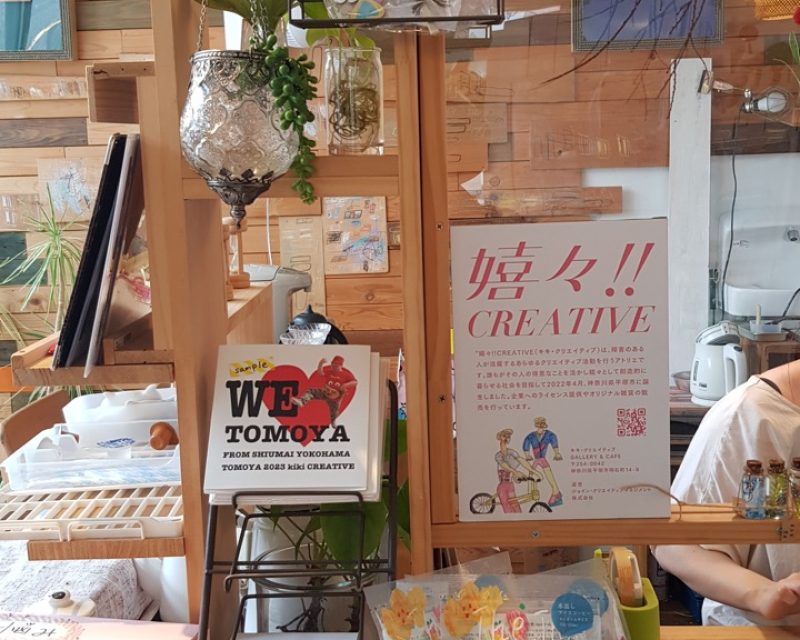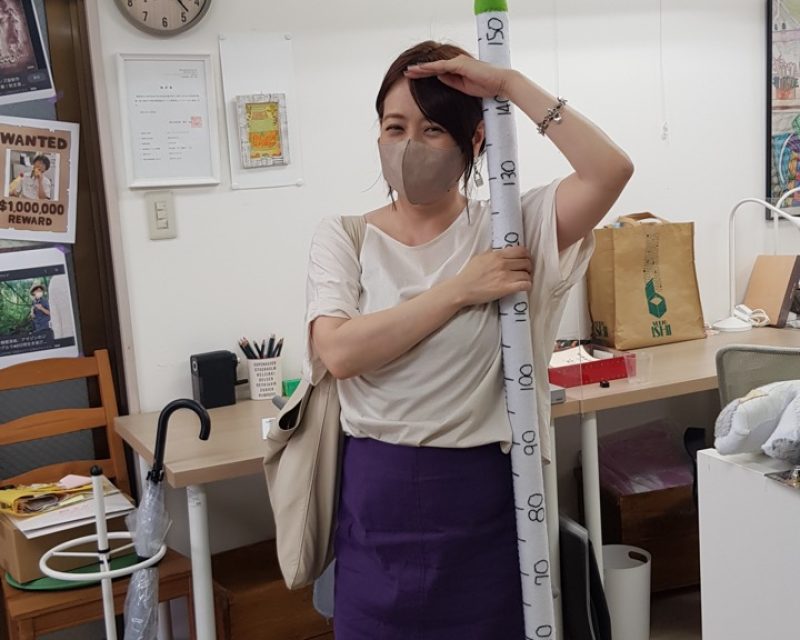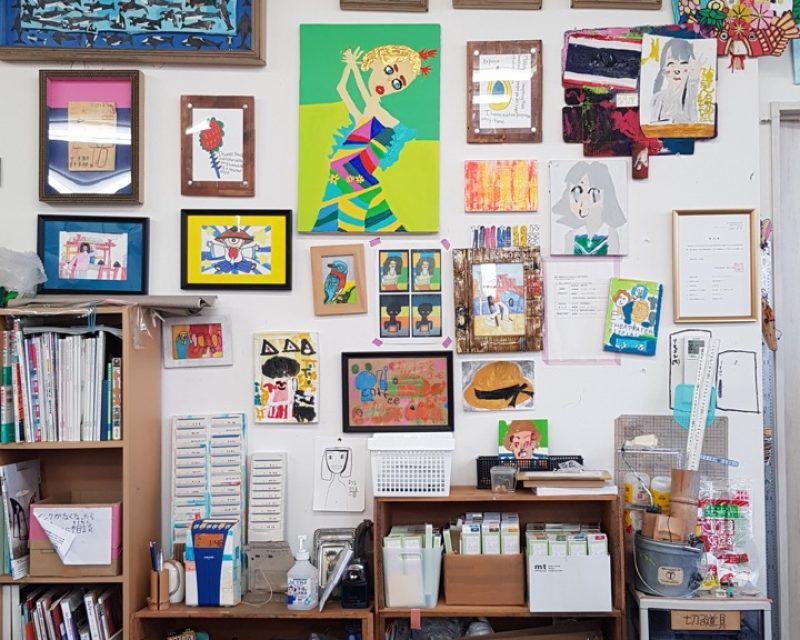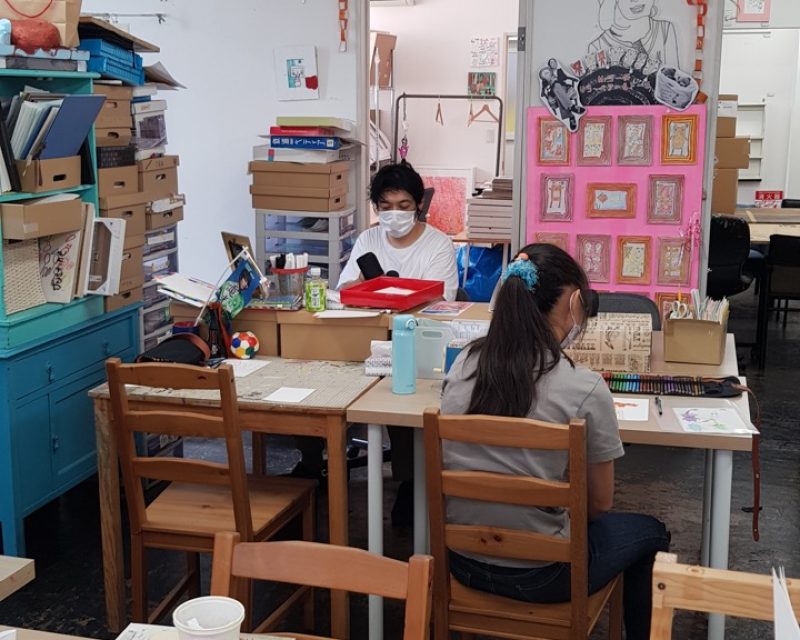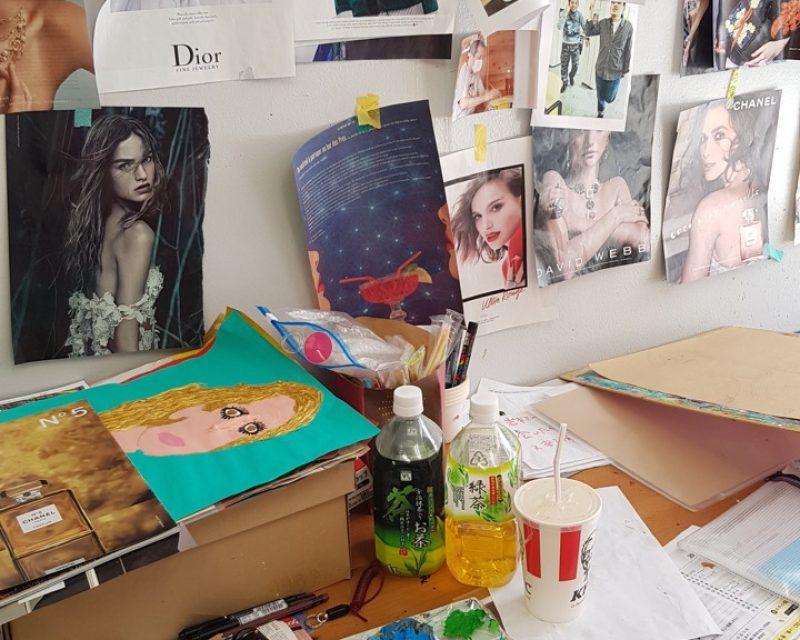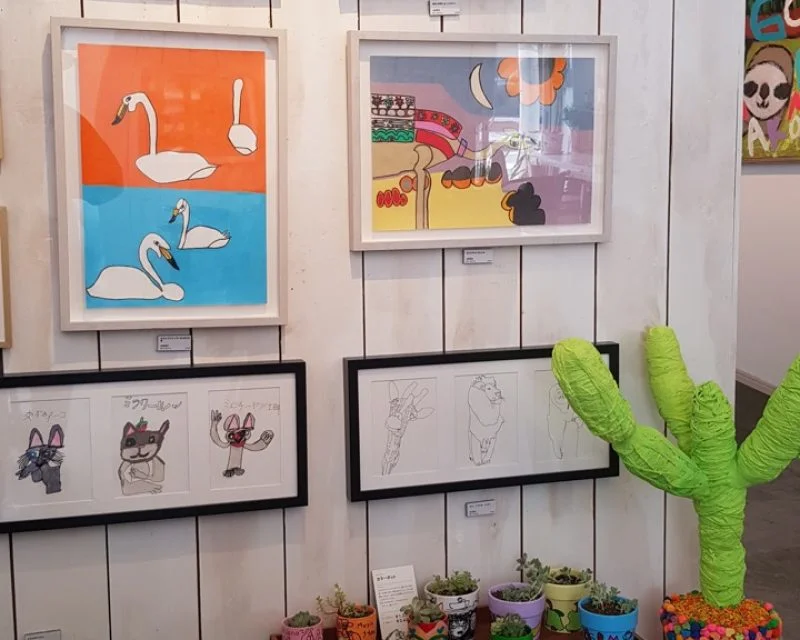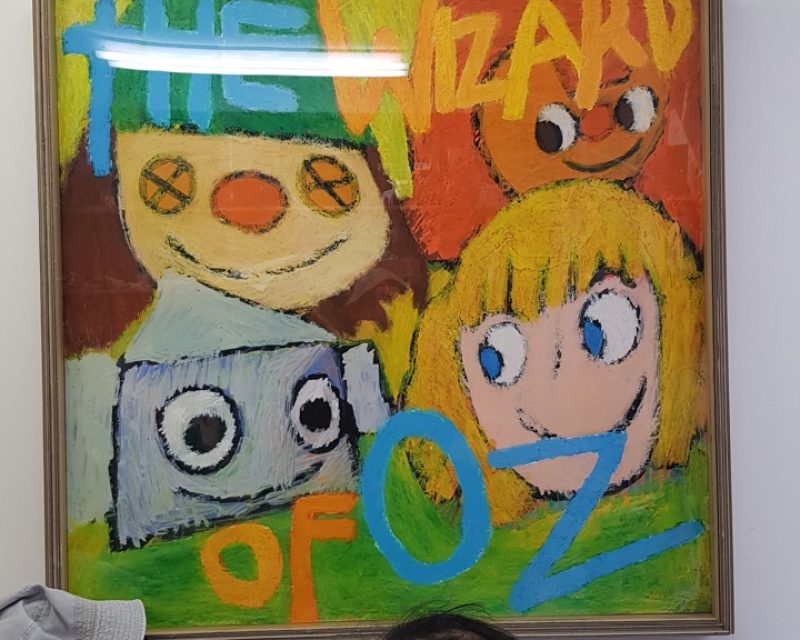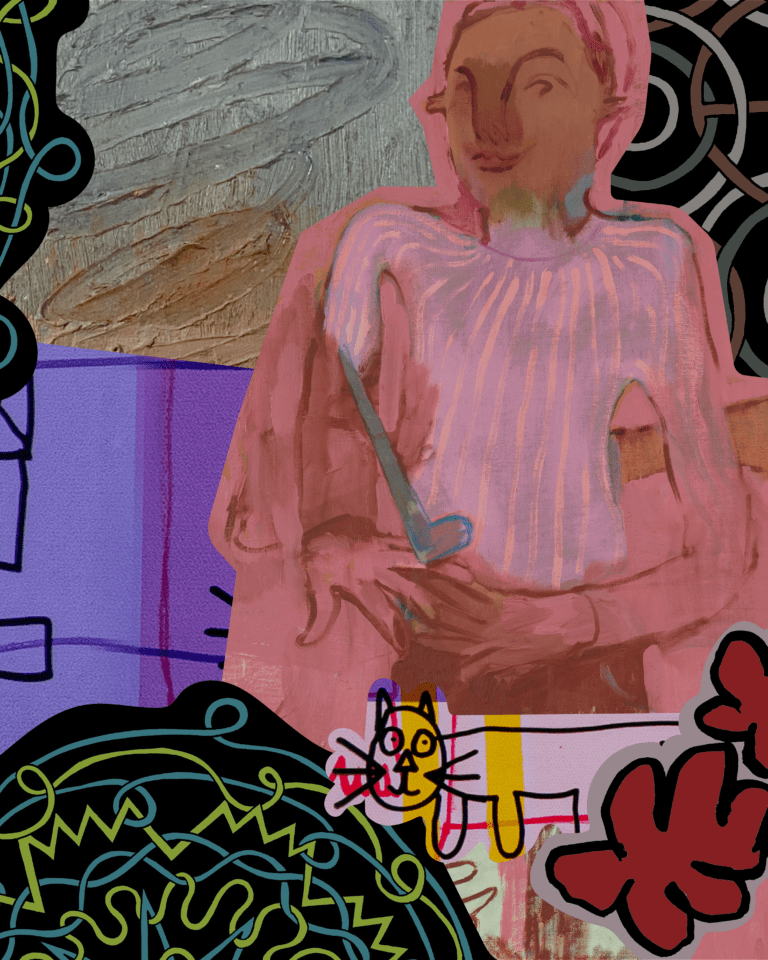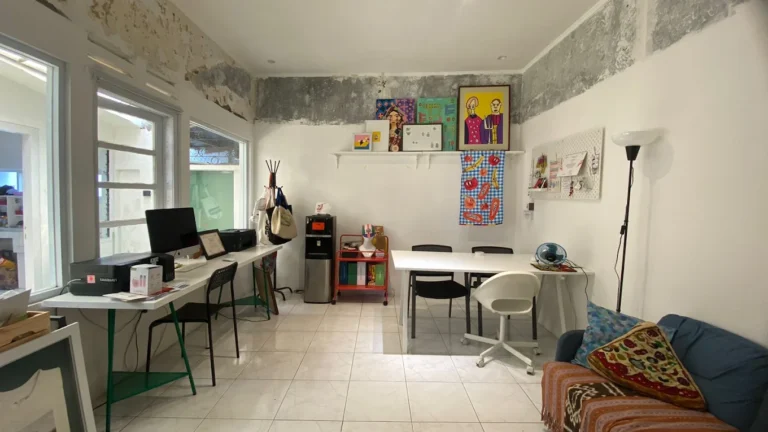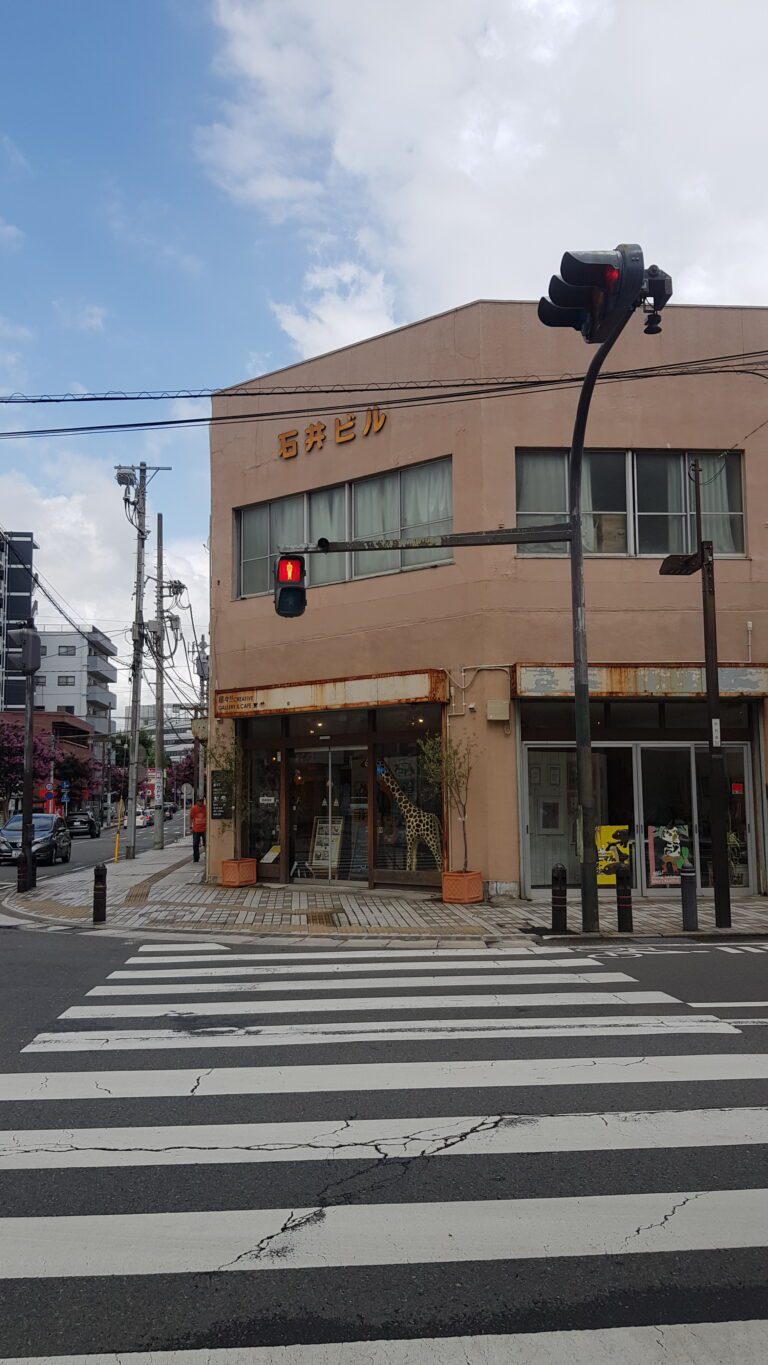Until it happen to visit Japan, I couldn’t resist a chance to explore Studio Cooca, (now rebranded as KIKI Creative due to Studio Cooca that transforms into a family venture). After numerous exchanges on Instagram and email, I finally received the green light to visit KIKI Creative on August 14th, a day filled with a mix of excitement and I don’t know–maybe a little anxious.
KIKI Creative is nestled in the serene locale of Hiratsuka, within the Kanagawa prefecture, just an hour’s journey from Tokyo and two hours from Ibaraki, where I reside. The distance, however, held no deterrence for me, as I cherish the thrill of travel.
My arrival was graciously received by a lady who managed a quaint café within the studio’s premises. I promptly conveyed the purpose of my visit – to meet Ms. Kitazawa, with whom I had a scheduled meeting. She kindly requested me to wait momentarily while she contacted Ms Kitazawa, and in the meantime, she extended an invitation to explore the adjoining gallery and café, a visual feast showcasing a multitude of artworks crafted by local artists.
As I meandered through the gallery, I couldn’t contain my delight. Each piece of art held a unique charm, enticing me to capture its essence through the lens of my cellphone. The exhibits ranged from postcards elegantly framed in up-cycled boxes, intricate animal sculptures, and vivid neon-hued crochet installations – a testament to the diversity of creative expression. The creations here extended far beyond the confines of conventional two-dimensional art prints.
Soon, Ms. Kitazawa, who would later become fondly known as Momoko-san, arrived to extend her warm greetings. She donned a white blouse and a strikingly vibrant purple skirt, her open-toed wedges revealing delicate light purple nail art on her toenails. After formal introductions, we embarked on a conversation, albeit at a measured pace, owing to the language barrier.
Momoko-san enlightened me about the Japanese government’s practice of subsidising businesses that employ disabled individuals. At KIKI Creative, the government provided financial support for the studio’s infrastructure and the salaries of the resident artists, often referred to as “members.” These members received a monthly stipend, complemented by opportunities to earn additional income through the sale of their artworks, with profits shared equitably between them and KIKI Creative.
I inquired about the number of members affiliated with KIKI Creative, and to my astonishment, Momoko-san revealed that the studio boasted approximately 100 members, spanning the age spectrum from 17 to 80. The magnitude of this endeavour left me incredulous, and I sought reassurance, repeatedly verifying this remarkable statistic.
One question from Momoko-san resonated deeply within me and left me momentarily speechless. She wondered how disabled artists in Indonesia navigated their creative journey without a support system like supported studio or government funding whereabouts. This query emerged during my explanation that our studio operated independently, reliant on the pursuit of funding from foundations. I could only offer the response, “They are living their best” realising the vast scope of understanding that still lay ahead.
Among our discussion, I had the pleasure of meeting one of KIKI’s resident artists, Shinsuke, who proudly displayed his artwork featuring trains and sprawling plant motifs. Shinsuke’s work briefly brought to mind the artistic endeavours of our Tab Artists, Adryan and Suzanne, evoking a sense of artistic kinship.
In addition to Shinsuke, I had the privilege of encountering Iwato-san, whose creations were undeniably recognizable from KIKI Creative’s Instagram presence. Her art predominantly featured depictions of women with resplendent golden hair, characterized by impactful gestures and expressions.
Upon visiting Iwato-san’s workspace, I was greeted by her engrossed in a large canvas, approximately one meter in size. Adjacent to her canvas lay cutouts from fashion magazines adorned with model photographs. It was revealed that Iwamoto-san had been fashioning her art by drawing inspiration from these magazine images. Surveying her workspace, I beheld stacks of international fashion magazines adorning her desk, with select clippings adorning the walls. The sight of Iwato-san’s workspace left me in awe and moved me to tears. It was revealed that Iwato-san had previously worked in construction, a testament to the transformative power of artistic expression.
KIKI Creative was not confined to a single building but encompassed another structure located a mere three-minute stroll away. Unlike typical office spaces, this second building resembled multi-story townhouses. I was graciously guided through three distinct workshops where the members crafted their art. While these rooms were not as spacious as the first building, they fostered an intimate ambience with fewer members, typically numbering around 5 to 7 individuals.
Each workshop I visited bore its unique theme for artistic creation. In the first workshop, most members were engrossed in sculpting and painting. My entry into this workshop was marked by the delightful presence of a large creature reminiscent of a creature which somewhat like a Capybara. Tsubu-chan, an esteemed member of KIKI Creative, cherished the art of crafting animal-themed sculptures, a passion she had nurtured since childhood. What struck me as truly fascinating was Tsubu-chan’s method; he fashioned these animal sculptures from clay, ingeniously utilizing the remnants of “bento box” leftovers for the creation of their skeletal structures, Momoko-san explained to me.
In the subsequent rooms, I was introduced to the themes of “fabric crafts” and 2D illustration. Momoko-san elucidated how KIKI Creative provides briefs to its artists, a method that includes collage-making. She clarified, “In Japan, we adhere to stringent copyright regulations, which is why, when creating illustrative works, not all artists follow the approach of Iwamoto-san, who draws directly from magazine references. This can inadvertently lead to close resemblances to the original source. Thus, we employ collage-making to provide a more accessible creative platform.”
Nearby to this space, a delightful collection of tote bag merchandise caught my eye. I ask about their availability for purchase, and Momoko-san graciously disclosed the process by which KIKI Creative produces these items. Her explanation revealed a similarity to the method employed by our studio for wearable merchandise creation, involving collaborations with vendors.
In the final room, I had the pleasure of meeting Yuka-chan, a creator of miniatures, small dolls, and charming keychains made from flannel material. These miniatures exuded an irresistibly adorable charm, reminiscent of the work of Jessi, who shares a passion for illustrating everyday objects on a smaller scale. Although I didn’t have the fortune of a personal introduction, I was offered a glimpse into the remarkable creations of Miyuki Murata, encompassing miniature replicas of packaged foods meticulously crafted from flannel. These astonishing works extended to the creation of a height measurement chart fashioned in the whimsical shape of spring onion. It was an undeniably Japanese touch. What added to the marvel was the revelation that Miyuki Murata executed all of these artistic endeavours with a single hand due to her motor limitations, an extraordinary feat of creativity and perseverance.
My visit to KIKI Creative that day left an indelible mark. It was a journey teeming with references to diverse artworks and creative methodologies, an opportunity to forge connections with the artists themselves, and a chance to engage in meaningful discussions with the dedicated team. It compelled me to contemplate the profound impact of community support for individuals with disabilities and the realization that, beyond state interventions, it is the responsibility of society to empower those bearing the mark of ‘imperfection’ in their lives. This experience also underscored the privilege enjoyed by the artists in our studio, who are blessed with a robust support system. And in the eloquent words of Momoko-San, it prompted me to ponder, “What do those without such privilege and access do then?”


